Republic of Mauritius
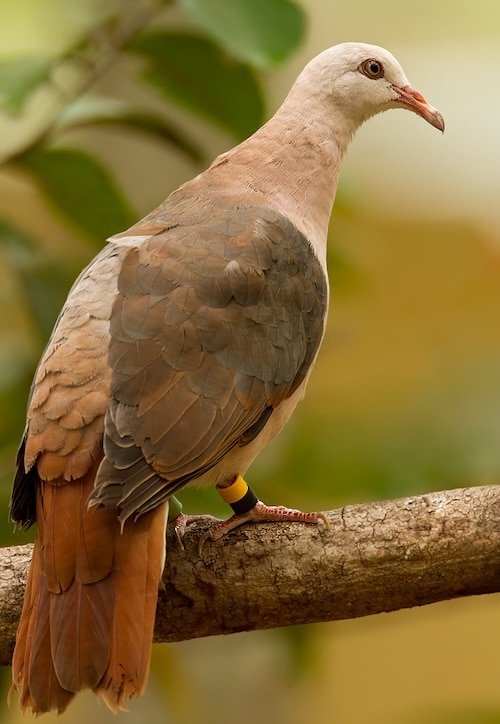
Mauritius is an island country in the Indian Ocean, about 2,000 kilometres (1,100 nautical miles) off the southeastern coast of East Africa, east of Madagascar. It includes the main island (also called Mauritius), as well as Rodrigues, Agaléga, and St. Brandon (Cargados Carajos shoals). The islands of Mauritius and Rodrigues, along with nearby Réunion (a French overseas department), are part of the Mascarene Islands. The main island of Mauritius, where the population is concentrated, hosts the capital and largest city, Port Louis. The country spans 2,040 km2 (790 square miles) with a population of about 1.3 million people. It has an exclusive economic zone covering 2,300,000 km2 (670,000 square nautical miles).
Mauritius Island is encircled by a broken ring of mountain ranges, varying in height from 1,000 to 2,600 feet above sea level. The land rises from coastal plains to a central plateau where it reaches a height of 2,200 feet; the highest peak is in the south-west, Piton de la Petite Rivière Noire at 2,717 feet. Streams and rivers speckle the island, many formed in the cracks created by lava flows. The island is surrounded by more than 150 km (100 miles) of white sandy beaches, and the lagoons are protected from the open sea by the world’s third-largest coral reef, which surrounds the island. Just off the Mauritian coast lie some 49 uninhabited islands and islets, several of which have been declared natural reserves for endangered species.
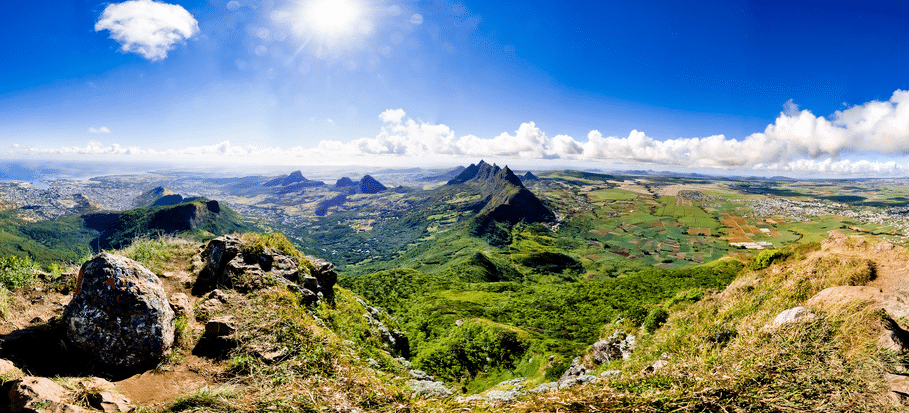
Mauritius Island Panorama – ©Clément Larher CC BY-SA 3.0 via Wikimedia Commons
The autonomous island of Rodrigues is located 560 km (350 miles) to the east of Mauritius, with an area 108 km2 (42 square miles). It is a volcanic island rising from a ridge along the edge of the Mascarene Plateau. The island is hilly with a central spine culminating in the highest peak, Mountain Limon at 1,306 feet. The island also has a coral reef and extensive limestone deposits. The population of the island is less than 50,000 people.
The Chagos Archipelago is composed of atolls and islands, and is located approximately 2,200 kilometres north-east of the main island of Mauritius. Mauritius claims sovereignty over the archipelago, which forms the British Indian Ocean Territory and is de facto controlled by the United Kingdom. To the north of the Chagos Archipelago are Peros Banhos, the Salomon Islands and Nelsons Island; to the south-west are The Three Brothers, Eagle Islands, Egmont Islands and Danger Island. Diego Garcia is in the south-east of the archipelago.
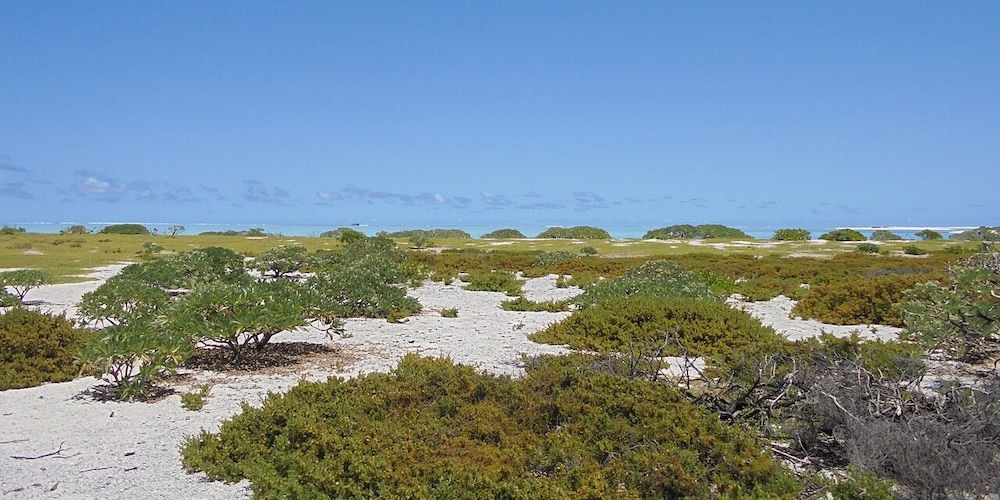
Cargados Carajos shoals – ©MauriceBer CC BY-SA 4.0 via Wikimedia Commons
St. Brandon, also known as the Cargados Carajos shoals, is located 402 kilometres (250 miles) northeast of Mauritius Island. It is an archipelago composed of the remnants of the lost micro continent of Mauritia and consists of five island groups, with between 28 and 40 islands in total, depending on seasonal storms, cyclones, and related sand movements.
The twin islands of Agaléga are located some 1,000 kilometres (600 miles) to the north of Mauritius. Its North Island is 12.5 km long and 1.5 km wide, while its South Island is 7 by 4.5 km). The total area of both islands is just 26 km2. The population of Agaléga and St. Brandon combines has been estimated at 274.
Tromelin Island lies 430 km north-west of Mauritius, which claims sovereignty over it, although it is registered as a part of France.
The environment in the nation of Mauritius is typically tropical in the coastal regions with forests in the mountainous areas. Seasonal cyclones are destructive to its flora and fauna, although they recover quickly.
There are 2 seasons: a warm humid summer from November to April, with a mean temperature of c.25 °C and a relatively cool dry winter from June to September with a mean temperature of c.20 °C. The warmest months are January and February with average day maximum temperature reaching c.29.2 °C and the coolest months are July and August with average overnight minimum temperatures of c.16.4 °C. Annual rainfall ranges from 35 inches on the coast to 59 inches on the central plateau. Although there is no marked rainy season, most of the rainfall occurs in the summer months. Sea temperature in the lagoon varies from 22–27 °C. The central plateau is much cooler than the surrounding coastal areas and can experience as much as twice the rainfall. The prevailing trade winds keep the east side of the island cooler and bring more rain. Occasional tropical cyclones generally occur between January and March and tend to disrupt the weather for about three days, bringing heavy rain.
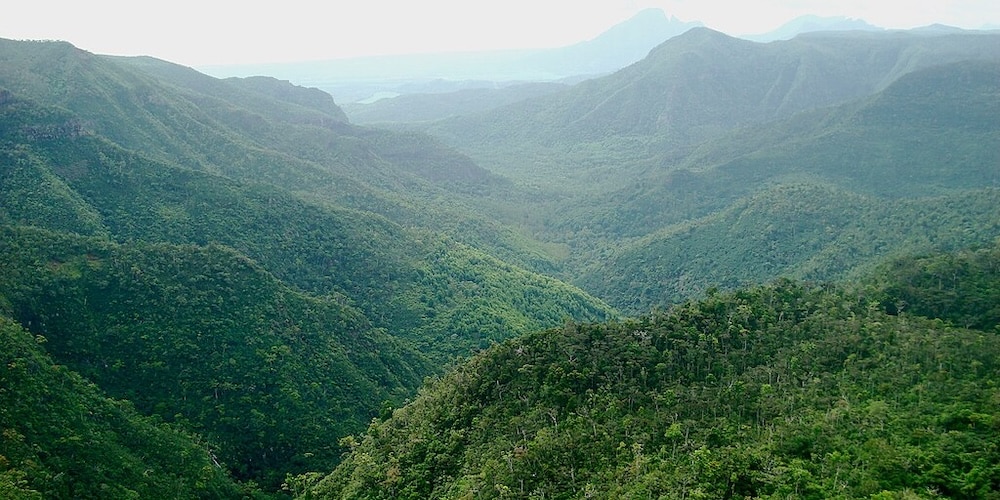
Black River Gorge National Park – ©Adamina CC BY 2.0 via Wikimedia Commons
Less than 2% of the native forest now remains, concentrated in the Black River Gorges National Park in the south-west, the Bambous Mountain Range in the south-east, and the Moka-Port Louis Ranges in the north-west. There are some isolated mountains, Corps de Garde, Le Morne Brabant, and several offshore islands, with remnants of coastal and mainland diversity. Over 100 species of plants and animals have become extinct and many more are threatened. Conservation activities began in the 1980s with the implementation of programmes for the reproduction of threatened bird and plant species as well as habitat restoration in the national parks and nature reserves
The Mauritian flying fox is the only remaining mammal endemic to the island, and has been severely threatened in recent years due to the government sanctioned culling.
Birding Mauritius
Along with the other Mascarene Islands, Mauritius is known for its biodiverse flora and fauna with many unique species endemic to the country. The main island was the only known home of the dodo, which, along with several other avian species, became extinct soon after human settlement. Other endemic animals, such as the echo parakeet, the Mauritius kestrel and the pink pigeon, have survived and are subject to intensive and successful ongoing conservation efforts.
Some of the world’s rarest birds are endemic to Mauritius. The Mauritius kestrel, once down to 4 individuals, is one of the great conservation success stories, which can be credited to the Durrell Wildlife Conservation Trust, which has done incredible work in Mauritius. A similarly impressive achievement on the part of the DWCT has been saving the Pink Pigeon from extinction.
Today both these species are well represented in captive collections, as well as thriving wild populations which are breeding successfully. At present, the DWCT is involved in rescuing yet another critically endangered Mauritian endemic, the Echo parakeet, which too, was hovering on the brink. With a bit of luck, it is possible to see all three these ‘megaticks’ in their natural habitat at Black River Gorges National Park, south-east Mauritius. And while there, look for some other rare endemics – the Mauritius cuckoo-shrike, the Mauritius bulbul, the pretty Mauritius fody and Mauritius olive white-eye, are all to be seen in this park, which is their stronghold.

Mauritius Fody Foudia rubra – ©Dubi Shapiro
Unfortunately, all these passerines are becoming rarer due to introduced mammals (rats, mongooses, monkeys, cats) and are in desperate need of further protection. Oddly enough, one endemic, the Mauritius grey white-eye, has adapted exceedingly well to Man’s modification of its habitat and is very common, even in hotel gardens. Note however, that outside of Black River Gorges, most of the birds you are likely to see, will be introduced species, which have become abundant on the Mascarenes. These include rubbish like zebra dove, spotted-backed weaver, house sparrow and common waxbill.
The one seabird that all visiting birders wish to see, is the very localised, and rare, Round Island (Trinidad) Petrel, which as its name implies, breeds on the rather inhospitable Round Island off northern Mauritius. To do so it would be sensible to take a boat trip towards dusk.
Rodrigues – The remnants of forest left on Rodrigues, contain possibly more than 90% exotic flora. It is not hard to comprehend then, why 7 of its 42 endemic plants are down to less than 10 specimens each. These include some of the world’s rarest and most endangered plants, like the caffe marron (recently down to a single shrub) and the Rodrigues hibiscus, which mercifully is represented in some foreign collections.
As is the case on the other Mascarenes, introduced mammals and birds have also had a detrimental effect on the island’s ecosystems. And as on the other Mascarenes, many species of bird were exterminated by man and his ghastly entourage of domestic and introduced animals. Today only two Rodriguan endemics remain. One, the Rodrigues brush warbler, is among the world’s rarest birds. Some 25 – 30 pairs remain. The other is the attractive yellow and orange Rodrigues fody, which belongs to the same genus as its other weaverbird congeners in Mauritius, Seychelles, Aldabra, Comoros and Madagascar. The population of the Rodrigues fody is estimated at about 200 pairs. Both species are not too difficult to locate in the wooded slopes of Citronelle, Solitude and Cascade Pigeons. At the latter you can also see the Rodrigues golden bats. One of the best places in which to search for the warbler and fody is near the research base at Solitude.
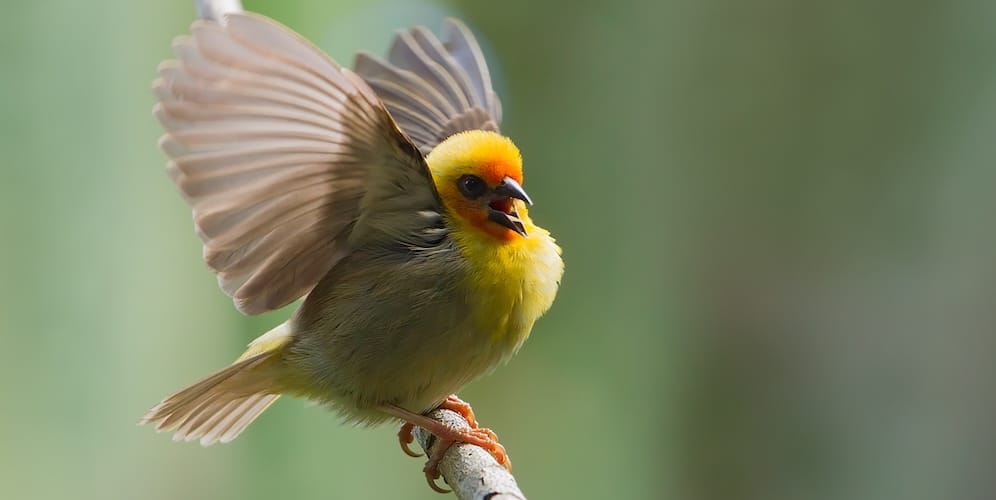
Rodrigues Fody Foudia flavicans – ©Dubi Shapiro
If you have a day to spare and wish to see some impressive seabirds, then take an excursion to the nearby islet of Ilot Cocos, a sanctuary for huge breeding colonies of common and lesser Noddys, bridled terns and a few pairs of fairy [white] terns. This can be arranged by your hotel.
Birding in the Mascarene Islands (Reunion, Mauritius & Rodrigues)
Together the islands of Reunion, Mauritius and Rodrigues form the Mascarene archipelago, which lies 700kms to the east of Madagascar. Situated between the equator and the Tropic of Capricorn, the islands’ volcanic origins date back some 13 million years. Today, only Reunion retains an active volcano, the formidable Piton de-la-Fournaise. It also claims the highest peak in the Indian Ocean, the 3069m Piton des Neiges.
There were also not many indigenous herps (reptiles and frogs); although Mauritius and the small offshore islet known as Round Island, still hold an impressive reptile fauna including endemic skinks, geckos and snakes. But the birds of the Mascarenes, were absolutely remarkable, including such distinctive species as the extinct Dodo (dronte) of Mauritius and its compatriots on Reunion and Rodrigues, the equally bizarre Solitaires.
The early settlers found three islands largely clad in tropical hardwood forests. Quickly, these forests were felled. (Only on mountainous Reunion do large tracts of original forest still exist). What remains in Mauritius and Rodrigues, are mere token remnants in a severely degraded state. The extraordinary birds were considered little more than a readily available food supply. It did not take the settlers much time to wipe out a long list of unique species.
Today, Mauritius retains 8 endemic birds, Reunion 9 and Rodrigues 2. There are also a few species common only to Reunion and Mauritius and high on the lists of visiting birders, some very rare and localised seabirds. In the space of a week, it is fairly easy to see all the lifers one can tick off in the Mascarenes.
When to go: Any time except cyclone season which is late Jan – early Feb
-
Derek Schuurman
| dschuurman@rainbowtours.co.uk
https://www.rainbowtours.co.uk/mauritius
-
Number of bird species: 159
(As at February 2025)
Number of endemics: 11
Mauritius Shelduck Alopochen mauritiana
Pink Pigeon Nesoenas mayeri
Mauritius Kestrel Falco punctatus
Echo Parakeet Alexandrinus eques
Mauritius Cuckooshrike Lalage typica
Rodrigues Warbler Acrocephalus rodericanus
Mauritius Bulbul Hypsipetes olivaceus
Mauritius Olive White-eye Zosterops chloronothos
Mauritius Grey White-eye Zosterops mauritianus
Mauritius Fody Foudia rubra
Rodrigues Fody Foudia flavicans
-
Avibase
PDF ChecklistThis checklist includes all bird species found in Mauritius , based on the best information available at this time. It is based on a wide variety of sources that I collated over many years. I am pleased to offer these checklists as a service to birdwatchers. If you find any error, please do not hesitate to report them. -
E-Bird
PDF ChecklistThis checklist is generated with data from eBird (ebird.org), a global database of bird sightings from birders like you. If you enjoy this checklist, please consider contributing your sightings to eBird. It is 100% free to take part, and your observations will help support birders, researchers, and conservationists worldwide. -
Wikipedia
Annotated ListThis is a list of the bird species recorded in Mauritius. The avifauna of Mauritius include a total of 159 species, of which 28 are endemic, and 22 have been introduced by humans.
-
Birds of Mauritius and Rodrigues
| By Jacques de Spéville | Jacques de Spéville | 2014 | Hardback | 108 pages, 183 colour photos | Text French & English | ISBN: 9789994938049 Buy this book from NHBS.com -
Birds of the Indian Ocean
| By B Narainsamy Ramen | Narainsamy Ramen (privately published) | 2022 | Hardback | slipcase | 1068 pages, 1000+ colour photos | ISBN: 9789994905874 Buy this book from NHBS.com -
Birds of the Indian Ocean Islands: Madagascar, Mauritius, Réunion, Rodriges, Seychelles and the Comoros.
| By Ian Sinclair, Olivier Langrand, Norman Arlott, Hilary Burn, Peter Hayman & Ian Lewington | New Holland Publishers | 2013 | Paperback | 264 pages, 71 plates with 1160 colour illustrations; colour distribution maps | Out of Print | ISBN: 9781431700851 Buy this book from NHBS.com
-
African Bird Club
WebsiteThe Republic of Mauritius was once home to perhaps the world's best known bird species, the Dodo Raphus cucullatus, and is now home to some of the world's rarest species, the Mauritius Kestrel Falco punctatus (at one stage the world's rarest bird) and the Mauritius Parakeet Psittacula echo, another critically endangered species. It is no surprise that for a remote Indian Ocean island, Mauritius has relatively few bird species, however the island does boast one of the densest concentrations of endangered bird species in the world. Although the Dodo can now only be seen as a tourist motif -
Mauritian Wildlife Foundation
WebsiteThe Mauritian Wildlife Foundation (MWF) is the largest non-governmental organisation (NGO) in Mauritius to be exclusively concerned with the conservation and preservation of the nation's endangered plant and animal species.
-
NP Black River Gorges
InformationSatellite ViewThe Black River Gorges area has been proclaimed as the first National Park for Mauritius on the 15th June 1994, by the President Mr Cassam Uteem, under the Wildlife and National Parks Act 1993. This has been a major achievement for Mauritius in the view of nature conservation and protection of our national heritage… -
NP Bras d'Eau
InformationSatellite ViewAfter the original Mauritian forests were destroyed, most of the land was used for commercial plantations of alien trees such as Mahogany, Araucaria, Tecoma and Eucalyptus. The majority of the National Park's land still lies beneath these plantations. However patches of the original biodiversity remain. -
NP Islets
InformationSatellite ViewThe park is made up of eight small islands, the largest being Ile D'Ambre. Mauritius is surrounded by a total of 49 islets, and aside from the National Park, seven others have been proclaimed as Nature Reserves -
NR Grande Montagne - Rodrigues
InformationSatellite ViewGrande Montagne Nature Reserve is a 20 ha nature reserve on the island of Rodrigues, preserving one of the last remnants of the island's endemic forest. -
NR Ile Aux Aigrettes
InformationSatellite ViewIle aux Aigrettes is an islet off the south-east coast of Mauritius. It functions as a nature reserve and a scientific research station. Reptile species include the large, slow Telfairs Skink, several species of ornately coloured day gecko, and a population of non-indigenous Aldabra giant tortoise, brought to Île aux Aigrettes to take over the important ecological role of the extinct Mauritian tortoises. The large tortoises eat & spread the plant seeds and thereby help the forest to rejuvenate naturally.
-
eBird
SightingseBirding This Month
-
BirdQuest
Tour OperatorSEYCHELLES, MAURITIUS, RODRIGUES & RÉUNION – Indian Ocean Islands endemics and seabirds in an Earthly Paradise -
Birding Africa
Tour OperatorIndian Ocean Islands: Mauritius, Reunion & Seychelles -
Ebony Forest
Local TourSpot the Pink Pigeon, Echo Parakeet, Mauritius Paradise Flycatcher, Mauritius Black Bulbul, Mauritius Kestrel, and Grey-white eye -
EcoMauritius
Local TourBird watching – Ebony Forest Guided tour-hiking trail – Bird Watching Platform – F&B -
FieldGuides
Tour OperatorOptional extension to the Indian Ocean islands of Mauritius and Reunion will add yet more endemics. -
Mauritian Wildlife Foundation
Local Pelagic TourEnjoy a half day trip on a deep sea fishing boat sailing around our seabird islands in the north of Mauritius. -
Rainbow Tours
Tour OperatorLocated in the Indian Ocean, the tropical island of Mauritius is a renowned beach holiday destination - with some beautiful wildlife to match. -
Rockjumper
Tour OperatorIndian Ocean Islands - Mauritius, Rodrigues, Réunion & Seychelles(12 days) -
YaNature
Local TourJoin us on an unforgettable bird-watching tour and connect with our local fauna.
-
2016 [11 November] - Phil Gregory - Madagascar, Mauritius & Reunion
PDF Report...we did jam a very close Mauritius Olive White-eye, and a Mauritius Bulbul not far away was a valuable addition of a sometimes tough species. The short boat trip to Ile aux Aigrettes sanctuary went well, but for some reason the tour was somewhat rushed (I complained about this afterwards), but we did enjoy great looks at Mauritius Fody, more Mauritius Olive White-eyes and a wonderful 150-year-old adult male Aldabra Giant Tortoise that looked so much like a model it was accidentally kicked by one of us who thought it wasn't real (no worries, it's huge with a hard shell)! -
2017 [10 October] - Michael Mills - Seychelles, Mauritius & Réunion
PDF ReportThe remote oceanic islands of Seychelles, Mauritius, Rodrigues and Reunion are renowned for their palm-lined, white-sand beaches, and in the case of Reunion, it's active volcano. From the birder's perspective, these island are characterised by high degrees of endemism, spectacular seabird breeding colonies, heroic conservation efforts and, unfortunately, irreplaceable losses such as the extinct Dodo. -
2018 [11 November] - Phil Gregory - Madagascar with Mauritius & Reunion
ReportOur day around Mauritius was excellent despite some heavy showers which we dodged very nicely. We picked up the big three very quickly, with great views of Mauritius Parakeet, Pink Pigeon, and Mauritius Kestrel at our usual site. Trying for Mauritius Cuckooshrike proved hopeless, but we saw Mauritius Bulbul at 3 sites, a valuable addition of a sometimes tough species. T -
2019 [01 January] - Sue Bryan
Reportuckily we soon had our quarry in the form of an Echo Parakeet which was soon followed by a few more calling from trees above us. -
2019 [02 February] - Hans-Åke & Karin Gustavsson - Réunion & Mauritius
PDF ReportThis report contains the observations from a two-week holiday trip to Réunion and Mauritius together with my non-birding wife. A good part of the time was spent relaxing and sight-seeing but the intention was also to see as many of the endemic bird species as possible. -
2019 [07 July] - Martijn Hammers
PDF ReportI visited Réunion for a biology conference and had a brief stopover on Mauritius. I had only one afternoon on Mauritius and went birding for one day on Réunion but was still able to see the majority of the endemic landbirds on Mauritius and all endemic landbirds on Réunion. -
2019 [08 August] - Richard Carlson
PDF ReportWe went to Mauritius to decompress after two weeks in Madagascar. Mauritius is a cross between Hawaii and Switzerland. It’s probably the best run country in Africa, you can even drink the tap water. We were wiped so birding was limited except for whatever wandered to the pool of our rental villa. I did insist on trying for the Pink Pigeons of Mauritius -
2019 [09 September] - Mark Finn
Report...A House Crow was noted around the airport before joining the rather slow and chaotic road system of the island. Checked in at Blue Bay our base for four nights recording Madagascar Fody, Zebra Dove, Village Weaver and Mauritius Grey White-eye in the parking lot. Mid-afternoon on our way to Ferney which is a natural valley within the sugar cane area. The entrance road had numerous Common Myna, Red-whiskered Bulbul and a few Madagascar Turtle Doves. From the gardens we encountered Mascarene Martin, Mascarene Swiftlet and at least two Rose-ringed Parakeets. A few Spotted Doves were present along with Indian Macaque the latter with well-grown young... -
2019 [11 November] - Phil Gregory
ReportAnnotated list -
2022 [10 October] - Anjana
Report...Just a few 100 meters from the Petrin visitor center, we spotted a flock of Mauritius Fody and visited the Bassin Blanc thrice during the day for the Mauritius Olive White-eye... -
2023 [11 November] - Phil Gregory
Report...Due to the cancelled flight, we had exactly 4 hours birding around Mauritius, which was excellent and in good weather, with Mauritours doing a fantastic job and local guide Jean-Claud being great. He took us to Chamarel, where we saw the rare Mauritius (Mascarene) Paradise-Flycatcher, Echo Parakeet, and luckily, a female Mauritius Kestrel just as we were about to leave. Chamarel Falls gave a bonus Mauritius Bulbul, though Mauritius Cuckooshrike is no longer accessible... -
2024 [09 September] - Hannu Jännes
PDF Report...Rodrigues Warbler and Rodrigues Fody on Rodrigues; Mauritius Kestrel, Echo Parakeet, Pink Pigeon, Mauritius Fody, Mauritius Grey and Mauritius Olive White-eyes and Mauritius Cuckooshrike on Mauritius; Barau’s Petrel... -
2024 [10 October] - Nigel Redman
PDF ReportOur morning at the Black River Gorges NP was marred by occasional light rain and cool, windy conditions. The birding was predictably slow, but eventually we managed some great views of Pink Pigeons and a small group of Echo Parakeets in perfect sunshine. Our primary target, Mauritius Cuckooshrike, took a lot longer as the birds were not calling much, but we all saw a male well in the end, although the female was only seen in flight. In the afternoon, we took a short boat trip to Ile aux Aigrettes where we quickly found our two remaining endemics, Mauritius Fody and Mauritius Olive White-eye -
2024 [12 December] - Luke Nash
PDF ReportBased on our experience, it is no longer feasible to see all the Mauritius endemics in one full day, based on the deteriorating reliability of the kestrel, the olive white-eye and the fody at traditional sites. We recommend at least three days to cover Mauritius. Réunion, on the other hand, can be done in one day if no effort is made to track down Mascarene Petrel, so two days (one as backup, that cuckooshrike is very tricky!) is plenty.
-
Birdman of Mauritius
WebsiteMy love of nature and birds in particular, took root at an early age. One morning in 1949, before school, I came across an assembly of children excitedly crowded around a carton, containing a delicate Zebra Dove captured in the streets of Mauritius. I pooled my resources together with my brother to purchase freedom for the bird. Sadly, it expired during the day. Filled with remorse, I from this day onward vowed never again to fail bird life, but to strive to acquire the knowledge required to preserve birds. -
Wildlife of Mauritius
InformationAlso includes lists of preserved and protected areas.

